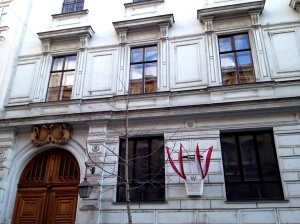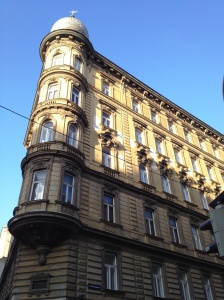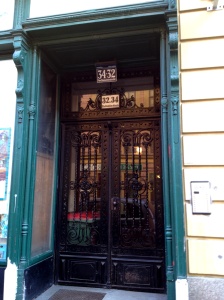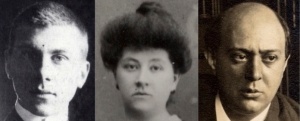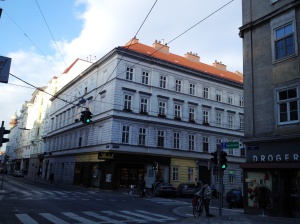
Dora and her brother Otto in 1880:
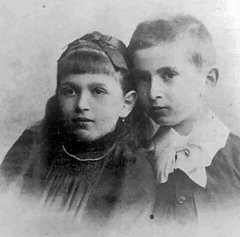
Many if not most of Freud’s patients came from the surrounding neighborhood of the 9th district (“Alsergrund”). A map of people closely related to both Freud and Schoenberg appears in a recent article on Schoenberg’s monodrama “Erwartung.” I decided before my time at the museum was up, I would go on a walking tour of a few of these homes, to get a sense of Freud’s patients and their lives. Most of the buildings are very similar to one another and to Freud’s home at Berggasse – large apartment buildings with moderately opulent Baroque ornamentation in the historische Stil – not nearly as grand as the Ephrussi and Rothschild palaces, but much more elegant than the 2nd district across the canal where most of these families had begun their sojourn in Vienna. The building in this picture is where Freud’s famous patient “Dora” (who bolted the treatment when Freud insisted on his own interpretation of her post-traumatic experiences) lived, under the real name of Ida Bauer. This was Ida’s home after her marriage to Ernst Adler – and where Kurt Herbert Adler, the second director of the San Francisco Opera (whom I met when singing there) was born in 1905 and grew up. The building, on Julius Tandler Platz, now faces the rather unlovely Franz Josefs train station, and is surrounded by similar buildings with pizza parlors and discount stores on their ground level. But the building itself recalls a more gracious time.
Here are images of the home of Dora’s parents on nearby Liechtensteinstrasse, where Dora grew up and had her traumatic experience with her father’s friend, “Herr K.”
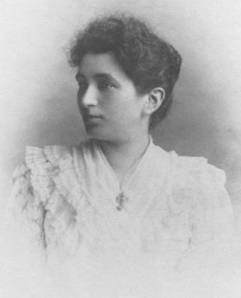
(This photo from web site https://louisey.wordpress.com/2011/11/page/2/ so I’m not 100% sure this is Dora, but it’s certainly what she would have looked like around the time she consulted Freud.)
The building on the corner (shown, center photo below) is quite opulent, while the building in which Dora actually grew up (left) is more modest in appearance. The ornate heavy wooden door, however, with its ornamental iron grillwork, reflects the prevalent bourgeous aesthetic of the era
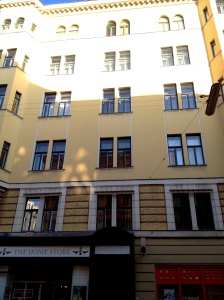
Here on the corner of Berggasse and Liechtensteinstrasse is the building where the painter Richard Gerstl lived. Gerstl had an affair with Schoenberg’s unhappy first wife, to which the work-absorbed Schoenberg turned a blind eye for a while, until he walked in on the couple in flagrante – as the whole sordid story is told in the Leopold Museum in the Schoenberg gallery. Mathilde decided to remain with Schoenberg, and Gerstl committed suicide. (Photos of these three persons from http://www.richardgerstl.com.) While this story sounds like something out of the tabloids, it demonstrates the overheated and nearly incestuous atmosphere that was also a part of the artistic community of fin-de-siècle Vienna.
Seeing these buildings, as ornate as some of them are, at their real locations, makes their inhabitants seem so much more human and less “objects” of history. The buildings are ordinary for the middle classes of their time, and these people, too, washed dishes, comforted crying babies, read books, entertained friends, took out the garbage, and generally lived their lives – amidst the creative ferment of their time.
Across from Freud’s home at Berggasse 19 is a palais built in 1897 for the Countess Eugenie Festetics. It is massive, but fairly simple because the architect chose to imitate a Renaissance rather than Baroque style. These were some of Freud’s near neighbors.
